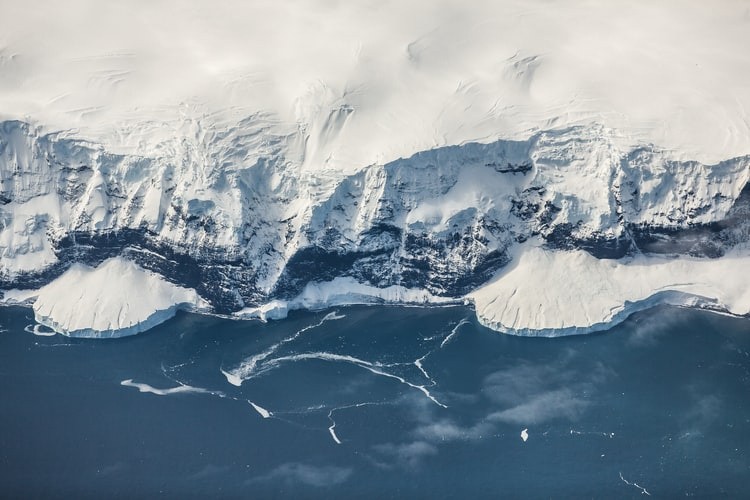
There seems to be more life than predicted well below the ice shelves of the Antarctic, a new report in the journal Frontiers of Marine Science finds.
During an exploratory survey, researchers drilled through 900 meters of ice in the Filchner-Ronne Ice Shelf, located on the southeastern Weddell Sea. Very few species have ever been observed under these environments at a distance of 260 km from the open ocean, in total darkness and with temperatures of -2.2 ° C.
Related Article: Antarctic: Ultrasonic Voice Coming From Ice Found to be Weddel Seals
More than what they were expecting
The purpose of the mission is to gather sediment samples. Yet, this work ended up being the first to discover the presence of stationary creatures clinging to a rock on the seafloor - close to sponges and possibly other previously unknown species.
"This discovery is one of those fortunate accidents that pushes ideas in a different direction and shows us that Antarctic marine life is incredibly special and amazingly adapted to a frozen world," says Dr. Huw Griffiths, biogeographer and lead author of the British Antarctic Survey.
Confusing Scientists
The discovery introduces many more questions than those it addresses, like how did it get there? What do they eat? How long were they there? How natural are these life-covered boulders? Are these the same species, or are they different species, as we see beyond the ice shelf? And if the ice shelf melting, what will happen to these communities?
Antarctic Shelf
In the Southern Ocean, floating ice shelves constitute the largest unexplored habitat. They occupy more than 1.5m sq km of the Antarctic continental shelf. Still, across eight previous boreholes, only a total area comparable in size to a tennis court has been surveyed.
The latest hypotheses of what life beneath ice shelves might experience say that if you travel farther away from open water and sunshine, all life becomes less abundant. Any tiny mobile scavengers and predators, such as fish, worms, jellyfish, or krill, have been found in these environments in past research. But it was predicted that filter-feeding species, which rely on the supply of food from above, were among the first to vanish deeper below the ice.
So, it came as a surprise when the geologists' team, while digging through the ice to gather sediment samples, encountered a rock at the bottom of the ocean below instead of salt. The video clip, which showed a huge boulder surrounded by mysterious animals, shocked them even more.
This is the first ever documentation of a population recorded deep underneath an ice shelf of a hard substratum (i.e., a boulder). And, it seems to go against all past hypotheses of what kinds of life could live there.
Source of Life
The researchers calculate that this community may be as much as 1,500km upstream from the nearest photosynthesis source, given the region's water currents. Other species are also known to extract nutrients from glacial melts or contaminants from methane seeps. But once they have the resources to collect samples of these organisms, researchers would not know anything about these organisms-an critical task in itself.
Future Studies
"We would have to find a way to get close to these creatures and their habitat to answer our questions - and that's less than 900 meters of ice, 260 km away from the ships where our laboratories are," Griffiths said. This suggests that we will have to discover fresh and creative approaches to research them and address all the new questions we have as polar scientists," the Dr. added.
With the climate crisis and the loss of these ice shelves, time is running out to research and preserve these habitats, Griffiths and the team also say.
ALSO READ: NASA Helps Drill Antarctic, Revealing Something Below the Ice
For the latest news about the most recent scientific discoveries, don't forget to follow Nature World News!
© 2025 NatureWorldNews.com All rights reserved. Do not reproduce without permission.





